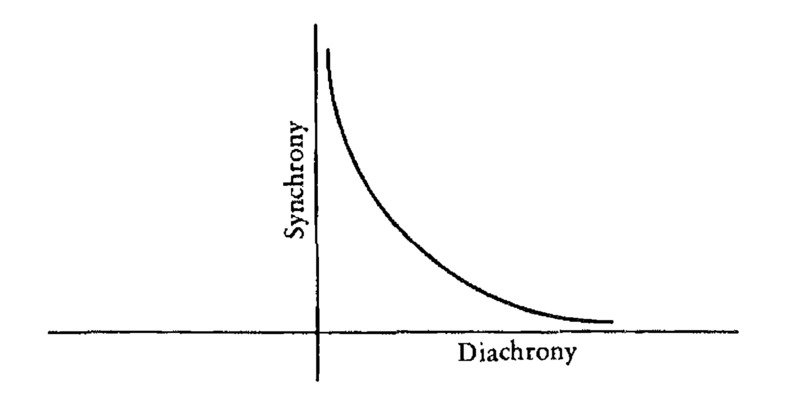Synchrony and Diachrony
Item
-
Title
-
Synchrony and Diachrony
-
Description
-
It is not merely – as Jakobson showed for linguistics – that synchrony cannot be identified with the static nor diachrony with the dynamic, but that the pure event (absolute diachrony) and the pure structure (absolute synchrony) do not exist. Every historical event represents a differential margin between diachrony and synchrony, instituting a signifying relation between them. Historical becoming cannot, therefore, be represented as a diachronic axis, in which the points a, b, c, … n mark out the discrete instances in which synchrony and diachrony coincide [as in the first figure] but, rather, as a hyperbolic curve which expresses a series of differential margins between diachrony and synchrony (hence, in respect of which, synchrony and diachrony constitute only two axes of asymptotic reference) [as in the second figure].
-
Creator
-
Agamben, Giorgio
-
Date
-
1978
-
Source
-
In Playland: Reflections on History and Play ; Infancy and History: The Destruction of Experience
-
Bibliographic Citation
-
Agamben, Giorgio. 1993 "In Playland: Reflections on History and Play." In Infancy and History: The Destruction of Experience. Translated by Liz Heron. Verson. Pages 75-76. ;;
Agamben, Giorgio. 1978 lnfanzia e storia. Giulio Einandi Editore
 Agamben-Infancy-76b.png
Agamben-Infancy-76b.png